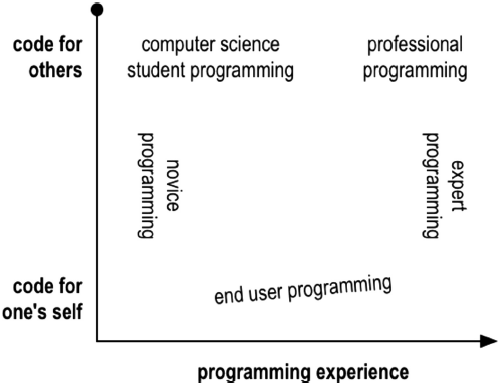Authors
Andrew Ko, Robin Abraham, Laura Beckwith, Alan Blackwell, Margaret Burnett, Martin Erwig, Christopher Scaffidi, Joseph Lawrance, Henry Lieberman, Brad Myers, Mary Beth Rosson, Gregg Rothermel, Mary Shaw, & Susan Wiedenbeck
Abstract
Most programs today are written not by professional software developers, but by people with expertise in other domains working towards goals for which they need computational support. For example, a teacher might write a grading spreadsheet to save time grading, or an interaction designer might use an interface builder to test some user interface design ideas.
Although these end-user programmers may not have the same goals as professional developers, they do face many of the same software engineering challenges, including understanding their requirements, as well as making decisions about design, reuse, integration, testing, and debugging.
This article summarizes and classifies research on these activities, defining the area of End-User Software Engineering (EUSE) and related terminology. The article then discusses empirical research about end-user software engineering activities and the technologies designed to support them.
The article also addresses several crosscutting issues in the design of EUSE tools, including the roles of risk, reward, and domain complexity, and self-efficacy in the design of EUSE tools and the potential of educating users about software engineering principles.
Sample

This diagram shows the underlying dimensions that characterize programming activity: experience and intented user.
The upward slant in end-user programming indicates that people with more experience tend to plan for other uses of their code.
Publication
2011, ACM Computing Surveys, Volume 43, Number 3, April, pages 1-44
